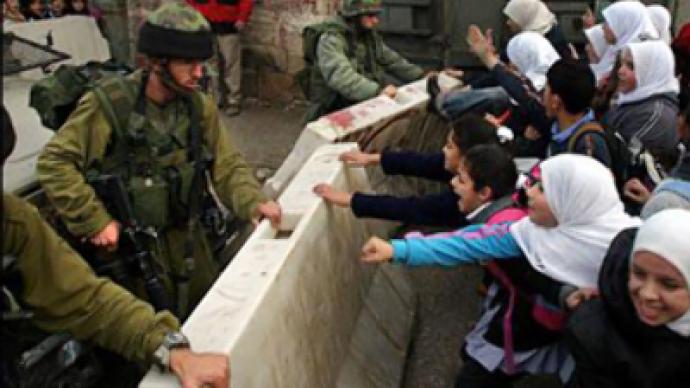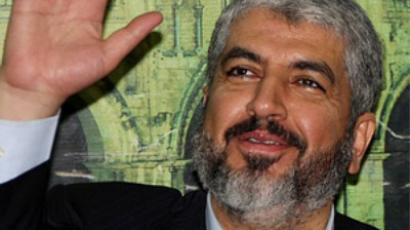What the Gaza blockade looks like

The Italian politician Fernando Rossi, formerly a senator of the Italian republic, now a counselor for the governor of Ferrara, has visited Gaza twice.
The first time was a year after the blockade was set up and two months before the 22-day bombing of Gaza commenced in 2008. The second visit took place exactly a year ago, four months after the bombing.
“I followed the news and I had thought I was prepared for this trip. When I saw the blockade with my own eyes I was speechless. There were 20 of us visiting Gaza in 2008 and we had brought in a little medicine and some hearing aids. All the boats that were in the harbor rushed out to meet us. Boats full of children. The first person I got a hug from was an Orthodox priest,” Rossi tells me.
“Out of the 1.5 million people living in Gaza, 400,000 are residents. 1.1 million are refugees who had been squeezed into the strip. They live in four huge camps. There is not enough land in Gaza to provide all of them with habitat. The living conditions are very hard, but the children amazed me – they are always smiling.”
The Israeli army claims there is enough of everything in Gaza. The army allowed 156,000 tons of humanitarian cargo into the strip over the past six months. That’s 4 kilograms per person.
“Look at what you consume and compare the figures. The hospitals are the worst. We brought in a little medicine – over 30 boxes. We realized this was like a drop in the ocean. The hospital didn’t even have enough paper – the doctors wrote medical records on tiny scraps. There was no electricity, and this was before the last war.”
Water turned out to be Gaza’s biggest problem.
“Gaza gets its water from earth layers close to the surface. It’s milk of lime, essentially, and it contains harmful substances. This means children who drink this water are prone to disease and the child mortality rate is very high. Only Israel gets its water from the deeper layers. The reservoirs were empty. Doctors told me the water had caused multiple cases of cancer, kidney and respiratory system diseases among children. It’s absolutely impossible to live in Gaza from the sanitation point of view. Seniors and children can’t leave the strip to get treated – they can’t go to Israel or Egypt.”
Rossi has never supported Hamas. He has always considered the Palestine Liberation Organization and Fatah to be the only political forces in the region.
“I have always supported Arafat. I was sure that Fatah and the PLO were important while Hamas was out of the picture. The doctors in the hospital went on strike. I couldn’t understand how it was possible to work in conditions such as these. They told us that Fatah urged them to strike and promised to increase their pay by 20% if they did. This was Fatah’s way of trying to undermine Hamas. I have seen Abu Mazen’s villa and Dahlan’s villa. I have also seen the small house where Haniya lives. I needed no more words after that, I saw the picture.”
Gaza used to have fields before the war.
“They grew garden strawberry. But they couldn’t sell it to anyone – only Israel is allowed to trade. If a field was next to an Israeli wall, they would reduce the field by 150 meters that were considered “neutral territory.” They shot at people working in the fields for no reason. If peasants approached the wall they were shot. We saw the surveillance cameras on the wall. They were moving constantly.”
Fishing has become a deadly profession in Gaza.
“The Israeli army banned fishing farther than 6 miles away from the seashore, which violates all the international laws. After war the distance was limited to 3 miles from the seashore, which means no fish at all. Fishermen are being shot at from Israeli motorboats. Members of international NGOs started accompanying fishermen and peasants taking their flags with them so that they are not killed.”
That’s what Fernando Rossi saw a year ago.
“Fields have been blown up, all the crops burned down. They’ve bombed out the UN headquarters, the UN school, parliament, university, hospitals, an American school, all the workshops, all the agricultural warehouses and farms, all the energy sources. They’ve killed donkeys and camels. They’ve bombed out cemeteries – there’s only soil plowed with explosions with body parts and bones scattered around.”
Rossi believes that Israel’ actions are not leading to what it wants, but rather to the opposite.
“Israel wanted to scare people by bombardments and to make them abandon Hamas. But they got the opposite – Hamas appeared to be the winner, and its supporters became even stronger. One could see pictures of crossed arms all around the place as a reconciliation sign of Fatah and Hamas.”
“There were hedged ruins everywhere hiding unexploded phosphorus and cluster bombs. There was an outbreak of cancer among children and women. But the Child Oncology Hospital in Khan Yunis had been blown up. The hospital was located 300 kilometers away from the border – it’s been watched 24 hours a day. And they know that there was nothing dangerous inside the hospital. But they destroyed it! They bombed out the newest hospital in Khan Yunis! They killed all the doctors and nurses,” Rossi said.
“I’ve been to a house, where orphans lived – they killed them all. There were 32 people living in this house. Israelis surrounded the houses, ordered everyone to get out and shot everyone down in the backyard. Then they finished off everyone left inside the house. Four children were wounded but survived covered by the dead bodies of their parents. And those children were smiling to us,” he recalled. They were 4, 5, 6 and 11 years old.
“The doctors could not figure out what kind of substance the bombs contained – they burned through the flesh and burned a child from the inside. It was impossible to figure out what to do with such wounds,” Rossi said.
Rossi reminded us of the fact that international conventions ban using the weapons without providing the information as to what’s their effect and how civilians can be protected.
“I met with families of prisoners. 8,000 people in Israeli prisons. People from Gaza cannot visit them. I talked to a mother who’s been fighting to visit her son for 23 years – she’s grown blind because of tears. Others won’t be able to see their son for 11 years – that’s his prison term for an escape attempt. I met a 22-year-old guy. He’s never seen his father, as he’s been in prison ever since his son was born. They let a resident of Ramallah go after his spending 7 years in prison and sent him to Gaza. He cannot get home to see his family, and his family cannot get to where he is. So, nobody can go and visit each other.”
A year ago Rossi arrived in Gaza via Egypt’s border.
“It is an hour drive from the border to Gaza City. We were traveling during the night and saw people with children everywhere. I opened the window in the morning – everything I could see was destroyed – the port looked like a plowed field. But all the people were in the streets together with us, and all of them were smiling. Israel thought that things would be the same as in Yugoslavia: they thought that after several bombardments people would abandon Hamas. They got the opposite. The more they torture them, the stronger they become. Israel cannot conquer these people.”
Nadezhda Kevorkova, Larnaca, for RT












